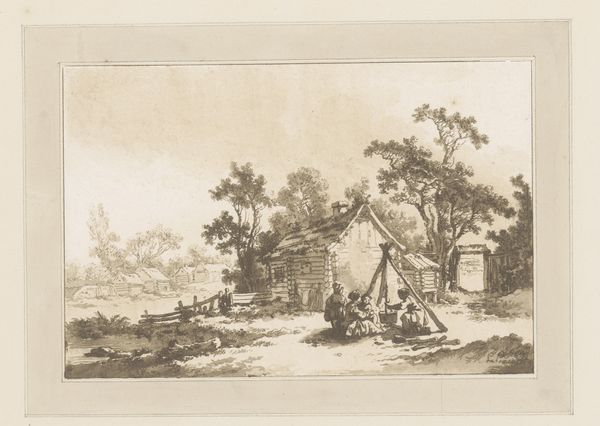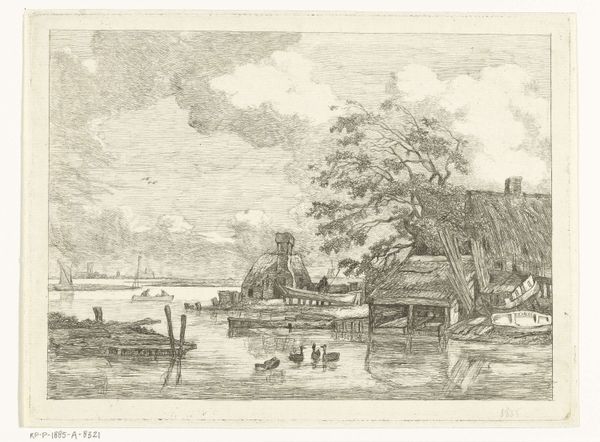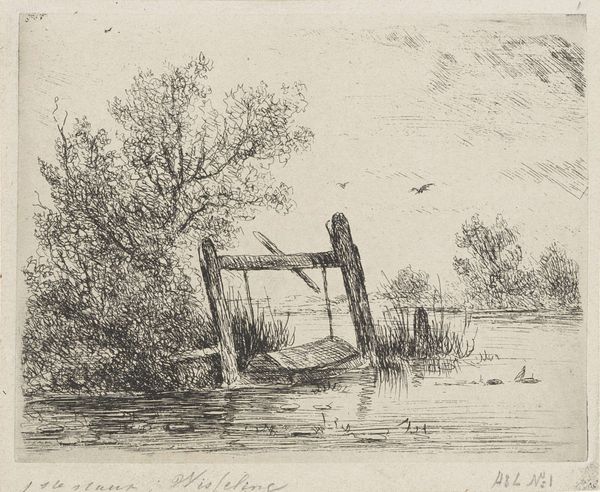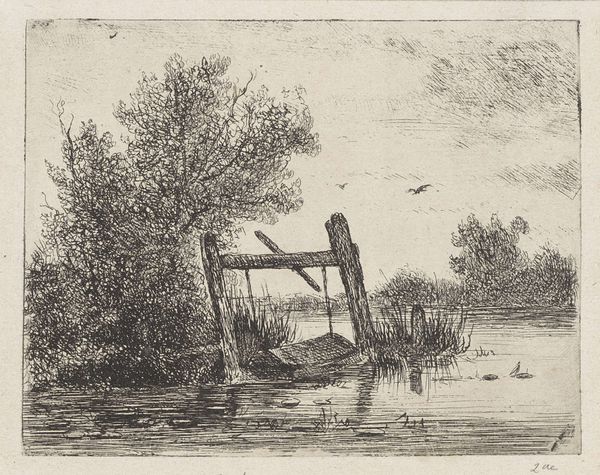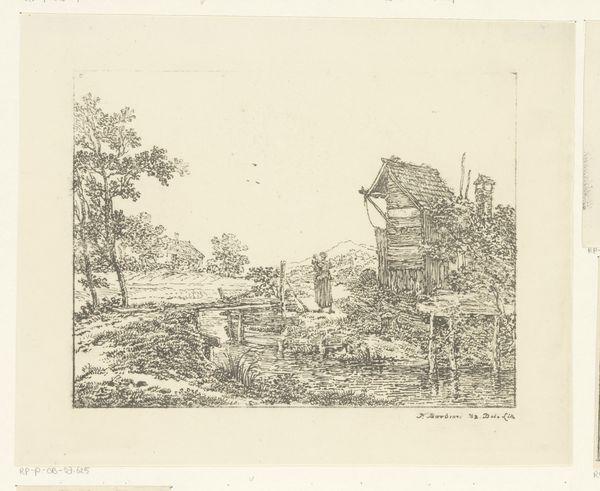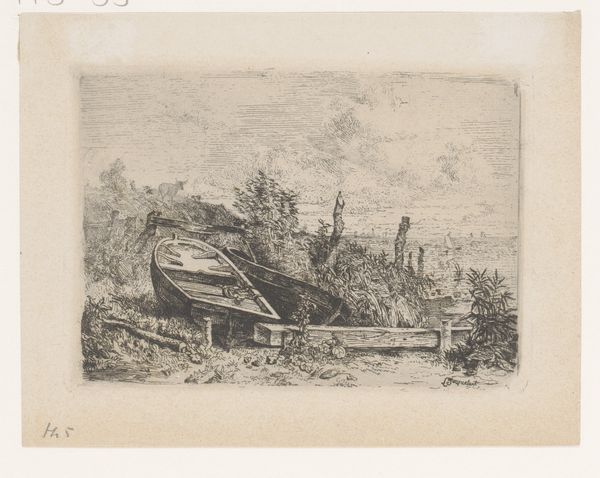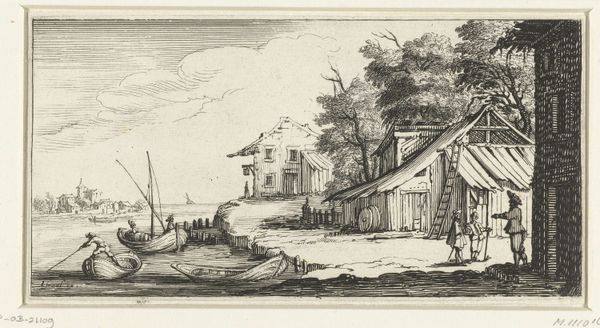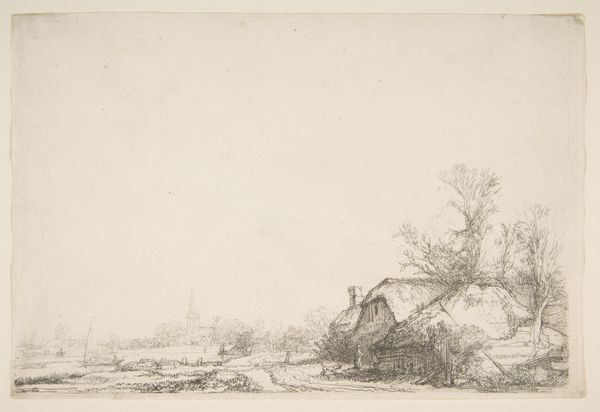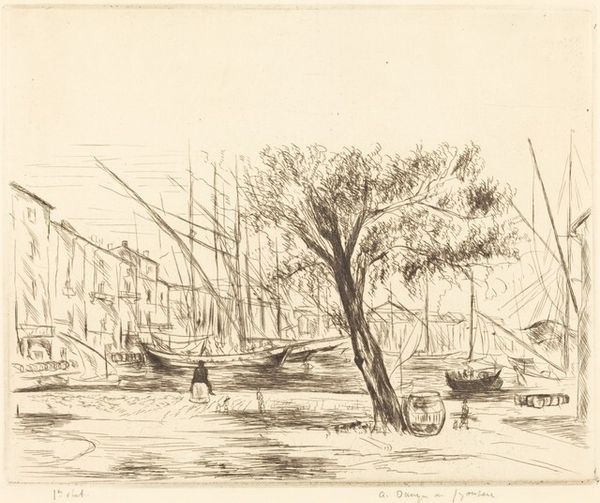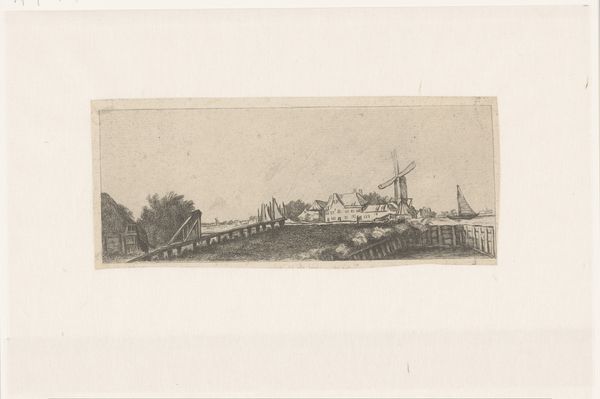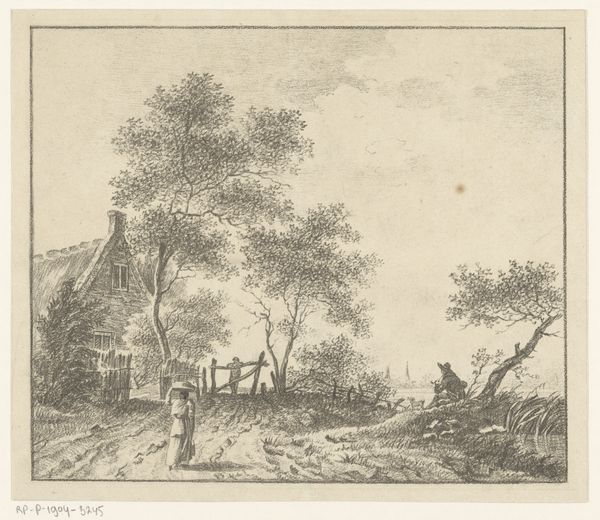
drawing, paper, ink
#
drawing
#
aged paper
#
toned paper
#
light pencil work
#
neoclassicism
#
sketch book
#
landscape
#
paper
#
personal sketchbook
#
ink
#
ink drawing experimentation
#
pen-ink sketch
#
sketchbook drawing
#
storyboard and sketchbook work
#
sketchbook art
#
realism
Dimensions: height 143 mm, width 165 mm
Copyright: Rijks Museum: Open Domain
Curator: This is "Bruggetje bij een sloot", or "Bridge over a Ditch", a drawing made with ink on paper by Hermanus Numan, sometime between 1754 and 1825. It is currently held in the Rijksmuseum. Editor: There's an immediate sense of rural life that strikes me; a kind of pre-industrial simplicity in the ramshackle bridge and the small boathouse. Curator: Numan lived through a period of immense social upheaval, experiencing both the Dutch Golden Age and the rise of Enlightenment ideals. It would be intriguing to investigate if Numan deliberately represented in this scene a critique or perhaps a longing for pre-industrial rural settings. Editor: Interesting! My eye is caught by the makeshift construction of the bridge, with its raw timber supports. And notice the way the light plays across the water, rendered through very economical pen strokes. It all seems quite functional. Curator: Right, but consider too that landscape art was becoming increasingly linked to notions of national identity and romanticism. Perhaps, even in this seemingly simple sketch, we can see Numan exploring Dutch identity, particularly through an idyllic lens. It speaks of authenticity perhaps? Editor: I'm drawn to the practicality embedded within. The drawing suggests a deep engagement with the materials at hand – the wood, the ink, even the paper itself, which looks beautifully aged. You can feel the artist experimenting. What labor went into the drawing and the building of such bridges? Curator: And think about how such structures are always points of connection, enabling movement and interaction between people and communities. Yet, in this drawing, we are left with only an indication of these crossings; they are implied more than overtly displayed. This opens us up to interpreting themes like connection, disconnection and transit during the social setting of this drawing. Editor: It highlights how essential infrastructure influences our perception of the rural setting; looking closer it isn't pristine or even untouched. Thanks to you, it also brings in the human story with the materials themselves. Curator: Absolutely. Art gives us a window into not only what existed but what was valued and what issues society might have been grappling with at any point in history. Editor: I'm glad we were able to dig in to both how that era used materials and what it valued.
Comments
No comments
Be the first to comment and join the conversation on the ultimate creative platform.

